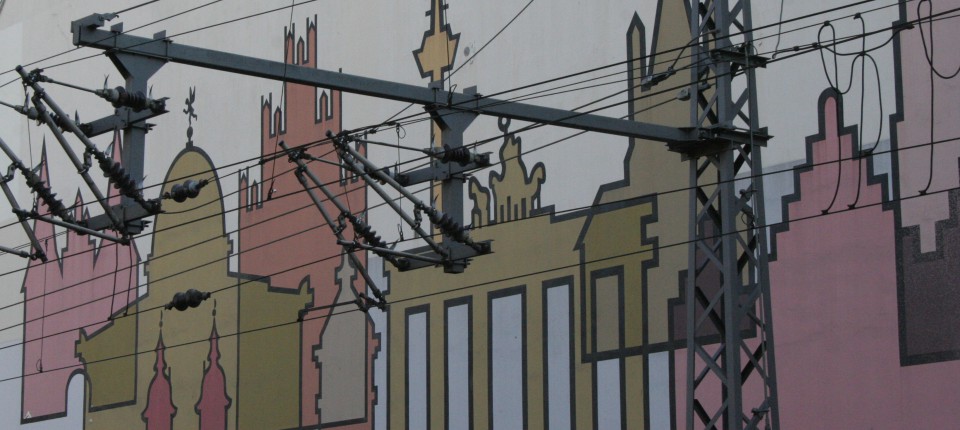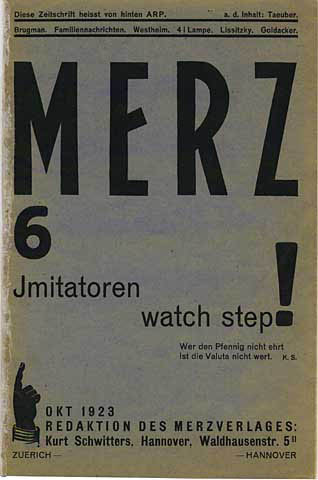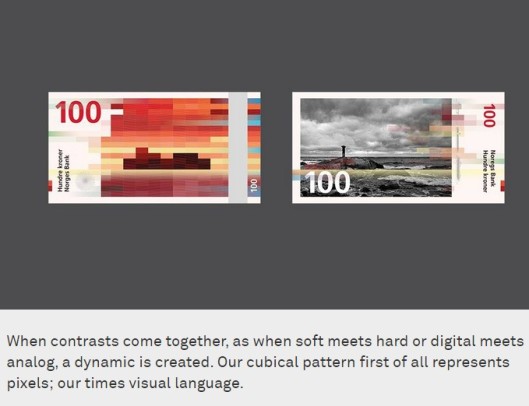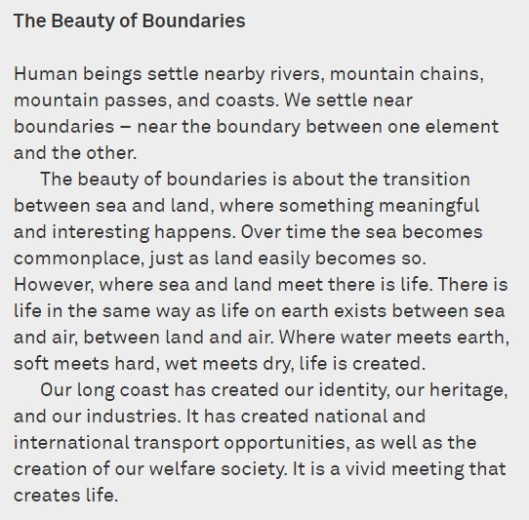Stikkord
Abstract, Abstract art, El Lissitzky, Graphic Design, Kurt Schwitters, Merz
At many occasions in my reading for R&E I came across the name of Kurt Schwitters (1887-1948) – who was creating and painting art in an abstract form. I found him also very inspirational because he was both an artist, graphic designer and art-musician. Schwitter supported the Bauhaus thinking as well as he agreed with DADA -an organisation of artists that provoked a new form of art (which included abstract art) very different from the traditional style which had been dominated by naturalistic portrait and landscape paintings. DADA embraced various forms of expressions – accordingly Schwitters did also express his belonging to «Dadaism» in various ways e.g by creating a verbal collage – see video of Schwitters «Ursonate» https://www.youtube.com/watch?v=6X7E2i0KMqM (Schwitters and Orchard, 2009).
When the World War II was approaching and the Germany became in control of the Nazi regime, Schwitters was forced to leave his home country, and he and his little family found his place to live on the beautiful island of Hjertøya outside the little town Molde on the west coast of Norway. On the island he created his home or another «MERZBAU» in an old stone cottage (see fig 1) (Merzbarn.net, 2011). The West Coast of Norway has a wild nature and the climate can be rough. I know the place very well because I actually live very close to this island where Scwitters lived.
Searching for Schwitters in my local library
When visiting the local library in Molde – and one go to the shelf searching for books about artists, one will find the name of Schwitters stands out with its own red label – just van Gogh and the famous Norwegian painter Edvard Munch have managed to get a label with their own name on, other less the authors names are listed in alphabetical order without any further reference to the artists names. Also in the restaurant area (called «Kafè Kurt») across the library – one of the rooms is decorated in the memory of Schwitters (See picture gallery below).
- Searching for Schwitter in my local library…
So in a way I grew up with the memories of Schwitters – and in some way one can say he is almost considered as a «local artist» and hero here. At the time he was living on this island, however, he was by many people considered as a stranger and at several occasions he was arrested because some claimed him to be a spion for the Nazis. This new form of art was also difficult to sell, therefore he was forced to paint in a traditional style including portrait and landscape motifs to earn for his living. His passion, neverthelss was to create art in an abstract way. Interestingly, he said it was important to him to live as close to the nature as possible to be able to create any form of abstract art.
Schwitters and his contribution to commercial advertising, typography and graphic design
What catch my interest is also Schwitters contribution in commercial advertising and graphic design. A majority of his work with graphic and typography can be seen in the printed version of MERZ (see fig 2). Schwitter says that MERZ had the meaning of building new art from the ruins of the old art, and he uses this term on all his abstract creations which he created out of already existing material he found superficial in the nature (things that other might have considered as rubbish) (Schwitters and Orchard, 2009).
Schwitter was a good friend of the well-known constructivist El Lissitzky, and it is possible to find elements of constructivism in some of Schwitters abstract (e. g fig 3) work (Schwitters and Orchard, 2009) as well as he [Schwitters] also included some of Lissentzky’s work in his printed version of MERZ (see fig 4).
His interest for constructivism can also be seen in an advert Schwitters made for Pelican inc (see fig 5). However, later this particular work has been criticised for it lack of relevance for what it shall represent – as the aim of any advert is to increase value and attention to a product or case. Even it is a simple abstract design it is complicated to make any immediate link between the given design and the product to promote (in this case Pelican ink) (Frascara, 1988).
On the other hand, Schwitters got some more accreditation for his typography design. As described in the text «Kurt Schwitters: A Portrait from Life» written by Kate Steiniz (1975), his typography was successful in terms of showing both clarity and logical order as well as «there were emphasis on horizontal and vertical asymmetrical arrangements in blocks and balance of black and white plans» (p.205).
Literature:
Frascara, J. (1988). Graphic Design: Fine Art or Social Science?. Design Issues, 5(1), p.18.
Schwitters, K. and Orchard, K. (2009). Schwitters in Norway. Ostfildern: Hatje/Cantz.
Steiniz, K (1975). Kurt Schwitters: A Portrait from Life. Comparative Literature Studies 12 (3) p.199-217
Online Sources:
Design is History (2009) Available at: http://www.designishistory.com/1920/kurt-schwitters/ (Assessed on 24.11.2014).
Picture gallery 1 Searching for Schwitter in my local library – (© 2014- Lykkefugl private photo).
Figure 1: Scwitters son Ernst outside the stone cottage at Hjertøya, Molde (1934). At: http://www.merzbarn.net/hjertoyamerzbau.html (Accessed on 24.11.2014).
Figure 2: Schwitters, K. Merz 6 (1923) [Magasine cover illustration] At: http://sdrc.lib.uiowa.edu/dada/merz/6/pages/00cover.htm (Accessed on 24.11.2014).
Figure 3: Schwitters, K. Mz 601 (1923) At: http://dailyserving.com/2011/08/kurt-schwitters-color-and-collage-at-the-berkeley-art-museum/ Copyrighted (ARS), New York / VG Bild-Kunst, Bonn (Accessed on 24.11.2014).
Figure 4: Schwitters, K./Lissitzky, E. (1923) Merz No. 6 page 57 [Magasine] At: http://sdrc.lib.uiowa.edu/dada/merz/6/pages/57.htm (Accessed on 24.11.2014 ).
Figure 5: Schwitters, K. Pelican Inc (1924) [Advert] At: http://havingalookathistoryofgraphicdesign.blogspot.no/2012/11/dadaism.html (Accessed on 24.11.2014).























